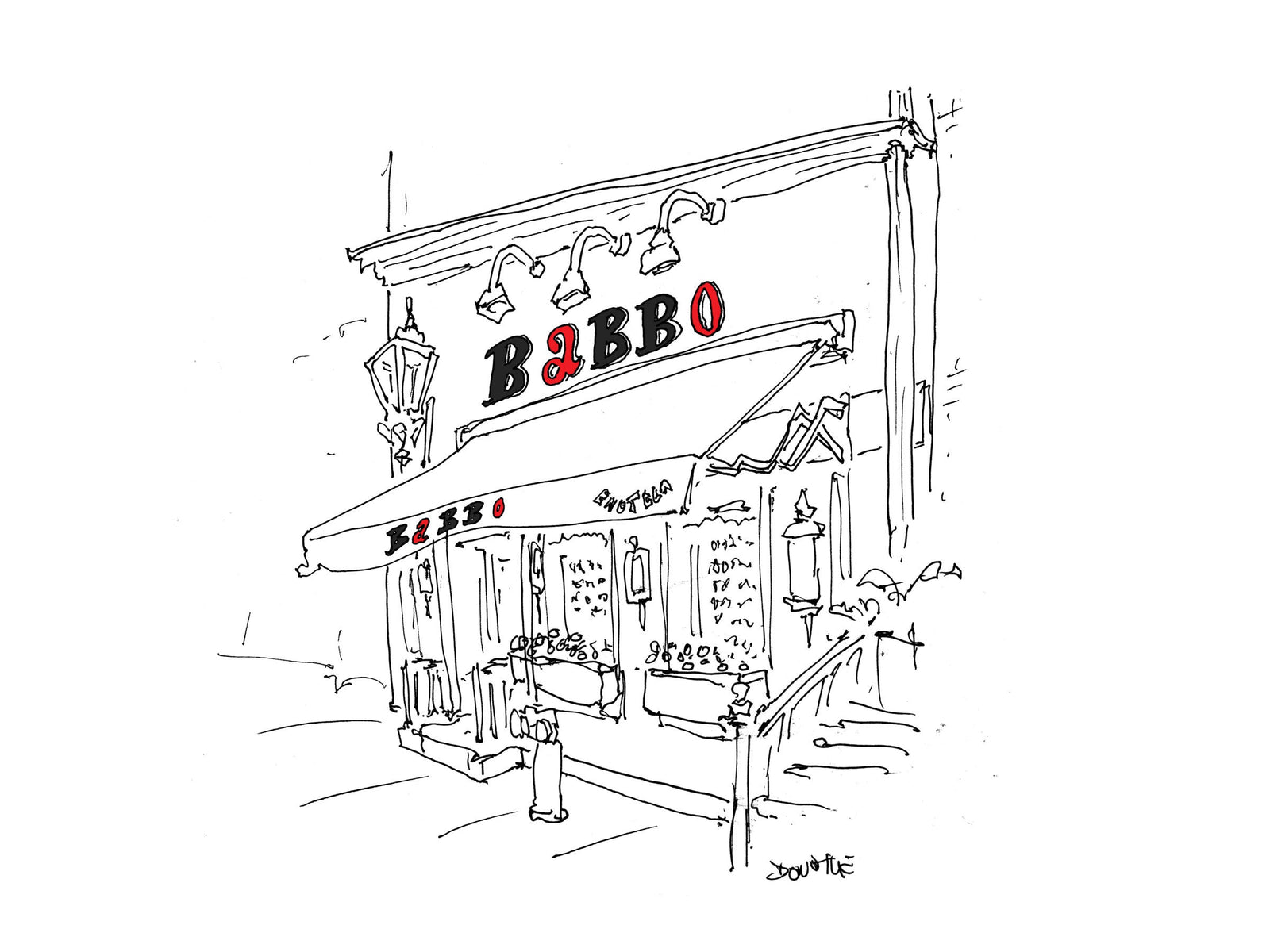
With New York’s law banning the restaurant reservation black market, NYC restaurants are making adjustments to how they manage bookings. For years, reservations at places like Balthazar and Cafe Carmellini were a commodity, often resold for hundreds of dollars through third-party platforms.
Now, as restaurants regain control of their booking systems, both diners and restaurant owners are navigating this new reality. The impact has been significant, and as someone who has spent years capturing NYC’s restaurant culture through hand-drawn restaurant prints, I’ve seen firsthand how these changes are affecting the spots I’ve drawn.
Until recently, the black market for restaurant reservations has been a booming industry. Third-party brokers would snag prime-time reservations at high-demand restaurants, then resell them at a steep markup. This made it nearly impossible for everyday diners to book a table without paying a premium. Some reservation holders even auctioned off tables to the highest bidder, turning the simple act of dining out into an exclusive, high-priced event.
For restaurants, this system created chaos. No-shows became more frequent, and regular diners struggled to find tables. It also meant that a select group of brokers, rather than the restaurants themselves, controlled access to some of NYC’s best dining experiences.
To crack down on this practice, New York passed a law making the sale or transfer of restaurant reservations illegal, forcing a major shift in the way reservations are handled. But while the law aims to make dining more accessible, it also presents challenges for restaurants that rely on a steady stream of reservations to keep tables full.
With the black market gone, restaurants are reclaiming control over their reservations and figuring out how to scale some hurdles. Many have adopted prepaid reservations or credit card holds to minimize last-minute cancellations. Some are shifting to walk-in only policies for certain nights or seating areas. Others, like Cafe Carmellini, have seen a shift in how customers approach booking, now that prime-time tables can’t be resold.
Balthazar, an NYC icon I’ve had the pleasure of drawing, has always been a tough reservation to secure. But with the new laws in place, they’re refining their system to keep genuine diners in control of their bookings. Instead of fighting against resellers, they’re focusing on making tables available to those who truly want to experience their classic French brasserie atmosphere.
For diners, these changes are mostly positive. Getting a table at your favorite spot no longer requires an insider connection or a hefty upcharge. But with high demand and limited space, scoring a reservation still requires forethought.

For years, booking a table in NYC often meant refreshing an app at just the right time. While platforms like OpenTable and Resy made securing a reservation convenient, they also stripped away the personal interaction that once defined dining out. This reservation reform is not only making tables more accessible, but they’re also reintroducing the human element to the process.
A number of restaurants, such as Babbo (for which I produced a postcard print), has a phone-based reservation system. In a city where efficiency is everything, that might seem like a hassle, but it’s also a return to something more personal. Talking to a staff member means more than just securing a time slot. It’s a chance to ask about the menu, get recommendations, and connect with the restaurant before you even walk through the door.
The reservation reform shift mirrors the way I create hand-drawn restaurant prints of NYC dining hotspots. In a digital world, my prints are tactile, made on paper, meant to be held and felt. Just like an old-school reservation call, they carry emotion. They preserve moments in time, whether it’s the memory of a special meal or the atmosphere of a favorite restaurant. And, as technology continues to evolve, there’s something to be said for keeping a little bit of the old world intact. (Check out the NY collection for yourself, here.)
With these reservation laws in place, it’ll take time for restaurants and diners to fully adjust. Some places may experiment with new booking systems, while others may double down on walk-ins. What’s certain is that NYC’s restaurant scene will continue to evolve, just as it always has.
For those of us who love dining out, the best approach is simple: plan ahead, support your favorite spots, and savor every meal. And if you want to keep those memories close, a hand-drawn restaurant print is the perfect way to celebrate the places that make NYC dining so unforgettable.